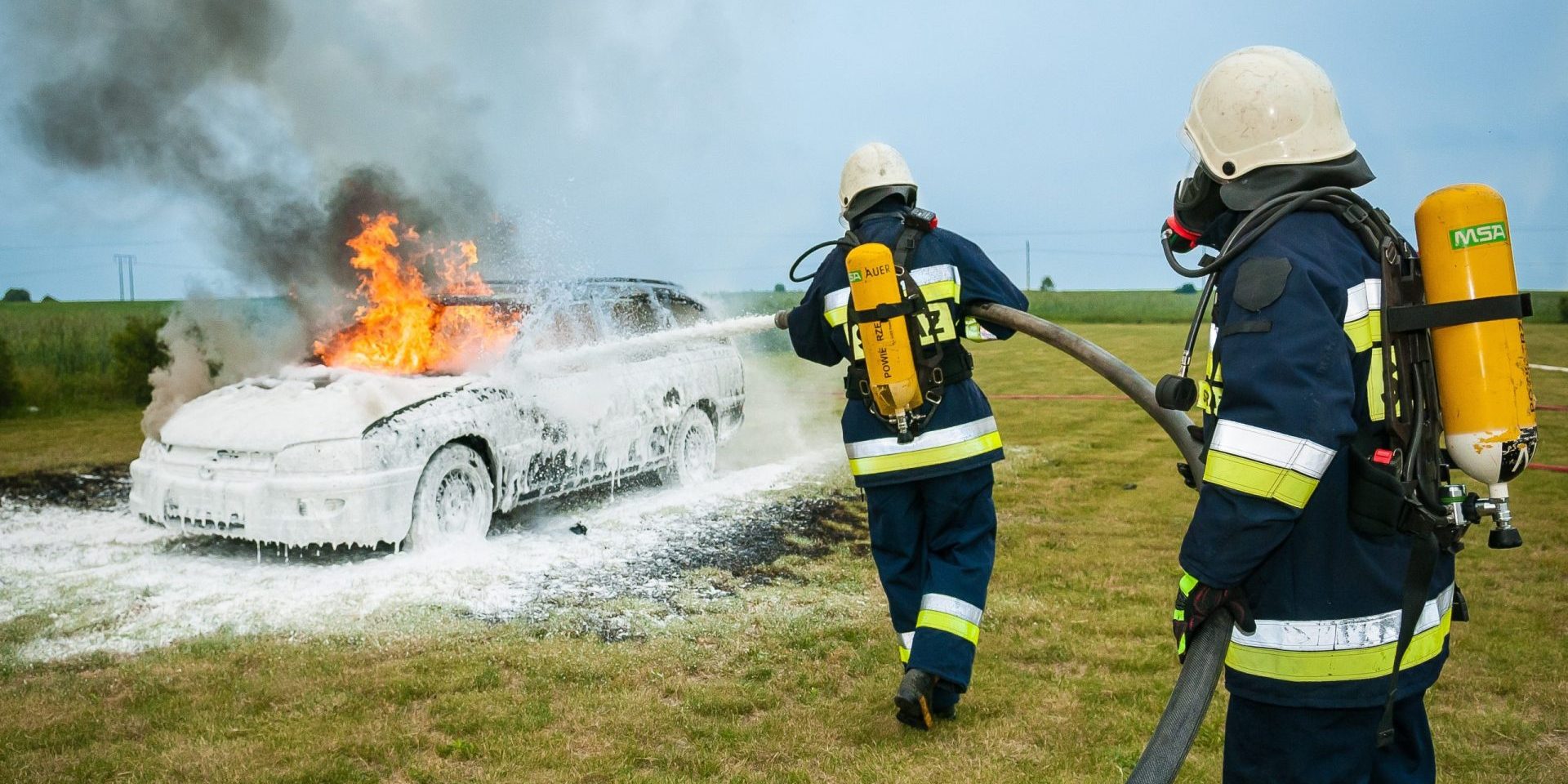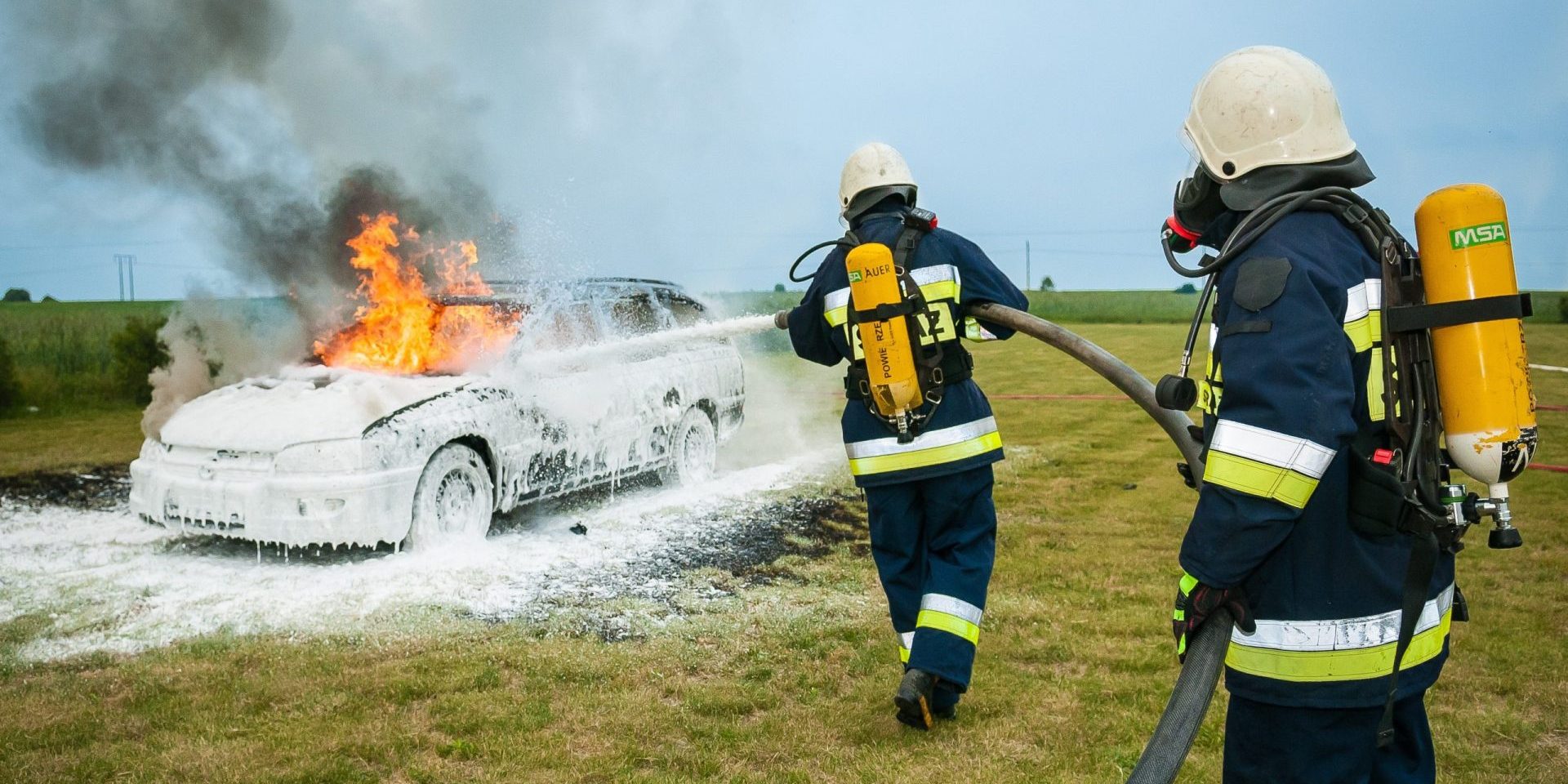Why is my car running hot?


Causes of a car running hot
Increased engine temperature is a crucial issue that demands prompt attention. The common causes of an overheated engine include low coolant, a malfunctioning radiator, broken water pump, faulty thermostat, damaged head gasket, or problematic fan system. These factors can lead to engine failure, and as such, require immediate action to prevent further damage.
In considering low coolant levels, it is critical to check for any possible leakages within the coolant system. A malfunctioning radiator, on the other hand, can be caused by clogging, breaking down of hoses, or mineral deposits. A broken water pump can result in hot coolant that does not cycle back through the engine. A faulty thermostat can also prevent the coolant from transitioning through the heating and cooling system. In comparison, a damaged head gasket enables coolant leaks into the engine oil, causing overheating, a frothy mixture of oil and water, and ultimately, permanent engine damage.
It is worth noting that overheating can occur due to a burst or malfunctioning fan system. This failure limits the amount of cool air that passes through the radiator and causes a rise in engine temperature. Thus, regular maintenance and routine checks should be carried out to ensure proper fan functionality.
Notably, rarely addressed causes that could lead to engine overheating include failed cooling systems, broken belts, clogged exhausts, or a slipped temperature belt. These conditions are critical and require expertise in handling them, leading to prompt preventive measures.
It is imperative to recognize the early signs of engine overheating to prevent severe damage and potentially costly repairs. A thorough diagnosis is necessary to identify the underlying issues rather than assuming and misdiagnosing automobile systems. By diagnosing and correcting overheating problems, one increases their automobile performance and prolongs the lifespan of their engine.
Low coolant level
Insufficient fluid volume in the cooling system could result in excessive heat buildup in vehicles. The dearth of coolant reduces the engine’s capability to regulate its temperature, resulting in overheating issues. Neglecting regular checks and necessary replacements of the coolant or any leakage can cause this issue.
The coolant operates under pressure and is responsible for dissipating the excess heat from the car’s engine. When there is inadequate fluid, it becomes difficult to keep a steady temperature, causing overheating issues. Lack of fluid decreases cooling capacity while also increasing the operational pressure inside the system. This usually leads to several damages if not diagnosed on time.
It is crucial not to overlook any oddities like smoke, puddles beneath your vehicle, or strange odors emitting from your hood as they may be signaling low coolant levels that need immediate attention.
Ensure you inspect your car’s fluids regularly and promptly fix minor leaks to avoid more severe problems down the line. A well-maintained cooling system not only helps prolong your car’s life but also ensures smoother operations while driving.
Don’t risk being stranded on a deserted road with an overheated car; immediately address any low coolant concerns by visiting a certified mechanic at your earliest convenience.
Malfunctioning thermostat
A faulty engine cooling system component can result in an overheated car. A common reason for a car running hot is due to a malfunctioning temperature regulator that prevents coolant flow into the engine when it gets excessively hot. This issue results in the inability of the thermostat to read the actual engine temperature and send signals accordingly to the vehicle’s computer system.
When a thermostat does not function correctly, it can cause extensive damage to your vehicle’s engine. The thermostat is one of the car’s crucial components that help regulate its operating temperature. It ensures that the coolant only circulates through the engine once it reaches proper working temperature. A stuck-open thermostat will cause your engine to be cooler than optimal as cold coolant continually flows through it, while a stuck-closed thermostat will keep hot coolant confined without allowing it to circulate outside of the engine block.
The check-engine light is usually triggered if you have a faulty thermostat in your car. An important indicator, as it’s essential that you address this issue immediately as neglecting repairs could lead to severe mechanical damage, which could get costly in both time and money.
If you suspect a defective thermostat or any other issues with your car’s cooling system, seek immediate assistance from an automotive technician. Instantly addressing such problems can prevent future serious complications and ensure safe driving on roads.
Broken water pump
Due to a defect in the pumping mechanism, engine overheating can occur. The water pump is responsible for circulating coolant throughout the engine, maintaining a safe temperature range. A broken water pump can impede the flow of coolant, resulting in significant consequences.
Here’s a 3-Step Guide to detecting and fixing a malfunctioning Water Pump:
- Check the Coolant Reservoir: When inspecting your vehicle’s coolant level, ensure that it is not leaking out anywhere else other than the reservoir. If you find this happening frequently, then there may be an issue with your water pump.
- Identify Noise: Unusual noise from your vehicle could signify that something is wrong with the water pump and requires servicing or replacement.
- Inspect Drive Belt Tension: Inadequate tension on your vehicle’s drive belt could indicate that your water pump has failed or might need some belt adjustment to operate efficiently.
It is often mistakenly believed that if the overheating arises due to malfunctioning of another component, you must proceed with repairing or replacing it first. However, failing to check on supporting units like the water pump may result in future malfunctions.
I recall a friend who had been experiencing overheating issues in his car. Despite inspecting multiple components under the hood thoroughly, he couldn’t diagnose what was causing it until he checked his water pump systematically. Eventually, his investigation led him to discover that his radiator fan wasn’t working correctly because of a defective water pump that had been overlooked during previous inspections.
Radiator issues
Overheating due to radiator-related issues can happen due to multiple factors. Blockages in the radiator could lead to reduced flow of coolant, which hinders heat dissipation. A damaged thermostat or fan could result in the engine overheating. Additionally, a poor-quality radiator cap could cause pressure imbalances, leading to an increased risk of fluid loss.
To prevent further damage from radiator-related issues, ensure regular maintenance and check-ups of the cooling system. Consider replacing parts that are suspected to be faulty immediately instead of running the risk of causing consequential harm.
Pro Tip: Do not wait until your car starts showing signs of overheating before taking action. Regularly inspecting and maintaining your vehicle’s cooling system could save you from expensive repairs and vehicle downtime in the future.
Cooling fan failure
When the cooling system of a car fails, it causes engine overheating. In absence of hot air from the environment to cool down, a car’s engine may overheat slowly or rapidly, depending on a number of factors.
The cooling fan is an essential part of the system that keeps the car from running too hot. When the cooling fan fails to turn on due to a broken motor, bad controller, faulty wiring or blown fuse, it disrupts the cooling process causing car’s engine to overheat.
When a driver notices that their car is overheating and they suspect that it is due to cooling fan failure, they should have their vehicle checked by trusted mechanics in order to identify and fix the problem before it causes significant damage.
Pro Tip: Before starting your engine on a hot day, turn your air conditioning off as it automatically turns on the cooling fan which can help increase its lifespan.
A Guide to Spotting Overheating Issues in Your Car
Experiencing problems with your vehicle running hot can be frustrating and concerning. Here are some signs to watch out for:
- Temperature gauge rising above normal: If you notice the needle on your dashboard’s temperature gauge steadily moving towards the higher end, it could indicate that your engine is generating more heat than usual. Check the gauge regularly to catch any sudden spikes that may signal an imminent danger of overheating.
- Steam or smoke coming from the engine: When coolant or other fluids leak and evaporate on hot engine components, it can produce visible vapor or smoke. If you smell a sweet or pungent odor or see white or blue exhaust, it may imply a coolant leak, a damaged radiator or hose, or a blown head gasket.
- Unusual noises or behavior: Overheating can cause your engine to make strange sounds, such as pinging, knocking, or hissing. You may also notice that your car struggles to accelerate, hesitates or stalls, emits rough vibrations, or displays warning lights on the dashboard.
- Fluid loss or contamination: Keep an eye on your coolant and oil levels and quality. If you find that your car is consuming more coolant or oil than usual, or that the fluids look muddy, foamy, or discolored, it could mean that they are leaking or mixing with each other.
If you suspect that your car is running hot, take these steps:
- Pull over and turn off the engine: Do not try to keep driving, as this can cause more damage and risk. Find a safe spot to park your car away from traffic and turn off the ignition to allow the engine to cool down.
- Check your coolant: Use a rag or glove to open the hood and look for the coolant reservoir or radiator cap. Do not try to open or remove any part that is hot or under pressure. If the coolant level is low, add some water or coolant as soon as possible. If you don’t have any, wait until the engine cools down and get some from a nearby gas station or auto shop.
- Call for help if needed: If you see smoke, smell burning, or feel unsafe to continue, call a tow truck or roadside assistance. Do not try to repair your car on the side of the road, especially if you are not familiar with the mechanics of your vehicle or lack the proper tools and equipment.
Preventing your car from overheating is crucial for its longevity and safety. Make sure to follow these tips:
- Maintain your cooling system: Regularly check and refill your coolant levels, replace your radiator cap and thermostat, flush your radiator and hoses, and inspect your water pump and fans for proper operation. Follow your manufacturer’s recommendations for maintenance intervals and procedures.
- Drive responsibly: Avoid pushing your car to its limits, especially in extreme weather or high-altitude conditions. Keep a steady speed, reduce your load, and avoid sudden stops or starts. This can help reduce the strain on your engine and cooling system.
- Keep your car clean: Dirt and debris can clog your radiator and interfere with air circulation, causing your engine to heat up. Wash and wax your car regularly, and remove any leaves, twigs, or insects that accumulate in your grille or vents.
Knowing how to spot the signs of a car running hot and what to do about them can save you time, money, and headaches. Always prioritize your safety and that of others on the road, and seek professional help if you are unsure how to handle a particular issue.
Temperature gauge reading high
When the temperature indicator on your car’s dashboard rises above the normal range, it could indicate that your vehicle is running hot. This can occur for various reasons, including a malfunctioning coolant system, a damaged thermostat or radiator, or a low coolant level. Neglecting these issues can result in engine damage and overheating.
If you notice steam coming from under the hood, a burning smell, or strange sounds while driving, your car’s temperature may be too high. It’s essential to pull over immediately and turn off the engine to prevent further damage. Continuing to drive with an overheated engine may cause significant damage to vital components such as the head gasket or pistons.
Regular maintenance and timely repairs are crucial for preventing your car from running hot. Ensure that you have enough coolant and check the coolant levels frequently. Regularly check for any leaks in hoses leading to and from the radiator regularly and keep an eye on any warning signs like steam.
In 2017, a group of scientists investigated ways to improve heat transfer in car engines by developing nano-coatings that can reduce heat loss and increase fuel efficiency. Their research highlights the importance of maintaining proper engine temperatures for optimal performance and fuel economy.
Steam or smoke coming from under the hood
If you sense fumes or smoke emanating from your car, it could be a sign that your engine is overheating. This indicates a serious mechanical issue that ought to be resolved without delay.
Follow these 5 steps to avoid any further damage:
- 1. stop the car right away in a safe place and shut off the engine.
- Open the hood, but do not touch or remove anything as it might scald you.
- Allow the engine to cool down before inspecting radiator hoses, coolant levels and the oil dipstick for any evident signs of leakage.
- If everything looks normal, verify if the coolant has gone low by checking its gauge on the dashboard. If so, add more fluid while allowing some time for it to mix properly with existing coolant.
- If there is still an issue or if you encountered other symptoms prior like strange noises or odor around tires, consider getting professional automobile assistance.
Steam or smoke coming from under the bonnet signifies something may have gone wrong with your vehicle’s cooling system. Overheating can occur for numerous reasons which include; inadequate circulation of coolant liquid inside or an internal leak running through gaskets leading to excess heat inside. Identify these reasons promptly to prevent substantial damages.
Long back in history when automobiles were new, many drivers didn’t comprehend that their cars had sophisticated cooling mechanisms and several were left stranded by problems that they hadn’t recognized because no indicator light warned them about potential issues within their engine.
Burning smells
The olfactory sensors are highly receptive to detecting a pungent aroma emanating from the engine compartment. The scent of burnt oil, plastic or rubber is a red flag for an overheated car. It could be attributed to leaked fluids onto engine parts or friction within the transmission. Furthermore, a failing clutch can also cause burning smells which require immediate attention.
If you notice this peculiar smell coming from your car, it’s essential to investigate the root cause promptly. Failure to address underlying issues can lead to severe problems that may ultimately lead to catastrophic failure of your vehicle. Ignoring the burning smell and continuing to drive could damage critical components and result in costly repairs.
Additionally, ignoring such an issue can expose you and other road users to potential safety hazards such as engine fires and mechanical failures while driving on busy highways. So, it’s important not only for your safety but also for other drivers’ wellbeing and property that you take prompt action if you notice any signs of your car running hot.
Don’t wait until it’s too late; ensure regular maintenance checks and observe all signs of distress in your vehicle promptly. Ultimately, with proper care and attention, you can avoid the stress and inconvenience of unexpected breakdowns while prolonging your car’s lifespan.
Engine warning light on
The indicator light on your dashboard that symbolizes an issue with the engine demands immediate attention. It indicates that something is wrong with your vehicle’s engine, and it may be overheating or low on fluid. Overheating can cause severe damage to various parts of your car, leading to expensive repairs or even total engine failure.
There are several reasons why the engine warning light illuminates: a malfunctioning thermostat, a broken water pump, a blown head gasket, or a low coolant level could all contribute to this. Check your vehicle’s manual for guidance on what the warning light indicates in your particular make and model.
If you continue to drive your car while the engine is hot, it might lead to significant issues such as warped cylinder heads, damaged pistons, rattling bearings, and cracked engine blocks. These issues can be avoided or minimized by addressing the warning light immediately and allowing your car to cool down before driving it again.
Pro Tip: Never neglect the warning light as doing so might lead to severe engine damage. Promptly visit a mechanic who will diagnose and fix the problem before it turns into an expensive issue.
What to do if your car is running hot
In case your vehicle is heating up, it requires immediate action to prevent further damage. Here’s what you can do to address the issue.
- First, if your car is running hot, turn off the air conditioning and turn on the heater to the maximum temperature. This allows heat to dissipate and aids in the cooling process.
- Next, pull over to the side of the road when it is safe to do so, and turn off the car’s engine for a few minutes.
- Finally, check the coolant level and assess if there are any visible leaks.
It is important to note that continuing to drive the car while it’s overheating can cause irreversible engine damage.
In addition, regularly checking the coolant level and changing it according to the manufacturer’s guidelines is recommended.
Some drivers have experienced overheating engines due to leaks in the radiator or coolant system, leading to expensive repairs.
In a similar situation, a driver noticed their car running hot during rush hour traffic. They promptly pulled over and followed the above steps. After checking the coolant system, they found a leak in the radiator, which was repaired immediately. This shows the importance of regularly monitoring your vehicle’s coolant system to avoid costly damage.
Stop driving immediately
As soon as you notice that your car’s temperature gauge is rising, take immediate action. Continuing to drive could cause irreparable engine damage. Instead, pull over to a safe location and turn off the engine.
Once the engine has cooled down, check the coolant level and the radiator cap. If either of these is inadequate or damaged, they could be causing your car to overheat. Additionally, have a look at the hoses running from your radiator — a damaged hose could also cause your vehicle to run hot.
If there are no noticeable issues with the engine, it might not be safe to continue driving. Call for roadside assistance or a tow truck to transport your vehicle to a garage where expert mechanics can diagnose and repair any underlying issues.
Ignoring an overheating engine can lead to serious problems such as cylinder head warping and even complete engine failure. One driver reportedly found this out firsthand when their head gasket blew while driving on the highway, causing thousands of dollars’ worth of damage.
Remember – if you notice your car running hot, act quickly and safely by pulling over and getting professional help.
Turn off air conditioning and turn on heater, if possible
To prevent further overheating of your car, it is crucial to disable the air conditioning and opt for a warmer climate inside the cabin. Start with reducing the temperature on the AC unit, turn off the air conditioner, switch on the heater fan at maximum speed and open all windows immediately. This will instantly help to regulate engine temperature.
Here’s a quick four-step guide to Turn off air conditioning and turn on heater:
- Lower down the temperature setting for air conditioning.
- Turn off the air conditioner.
- Activate maximum speed of your car’s heater fan.
- Roll down all car windows to let out hot air.
It’s important to note that this step is only a ‘quick fix’ solution. To prevent future overheating issues, you should take your car for professional evaluation.
One thing to keep in mind is the possibility of malfunctioning parts such as water pumps or thermostats causing overheat issues. In these cases, it may be necessary to repair or replace faulty components.
Last summer, I was driving my SUV on a hot day when suddenly steam started emanating from under the hood. Panicking, I pulled over immediately and turned off my vehicle’s engine. After confirming that everything was safe, I discovered that my engine was running too hot due to an issue with my cooling system. By turning off my air conditioning and switching on the heater while pulling over swiftly eventually saved me from severe damage.
Check coolant level and refill if necessary
To maintain the optimal performance of your vehicle, you need to ensure that the engine does not overheat. Adequate coolant levels are essential for this. Here is how you can check the coolant level and refill if necessary.
- Open the hood of your car after turning it off and letting it cool down for at least 30 minutes.
- Find the coolant reservoir tank, typically marked with a label like “engine coolant” or a related symbol.
- Identify the minimum and maximum markings on the side of reservoir tank and check if the current level is within these limits. Add coolant as necessary using a funnel to avoid spillage.
It is essential to monitor your car’s engine temperature regularly, especially during long drives or hot weather conditions.
As an additional tip, if you observe that your car continues to overheat even after refilling and checking the coolant levels regularly, consult a professional mechanic to diagnose underlying issues accurately.
In some cases, low coolant levels could be due to leaks in hoses or pump problems. By overlooking such signs, the situation could elevate dangerously, causing irreversible damage to your vehicle’s engine.
Years ago, cars relied upon water alone for their cooling requirements. Antifreeze was not yet common as it did not exist then. Nowadays however most vehicles contain a mixture of fifty percent antifreeze and fifty percent water in their radiators because antifreeze helps prevent engines from freezing in cold temperatures while slowing corrosion caused by minerals present in tap water.
Check for leaks in the cooling system and fix them
An important aspect of maintaining your car’s health is ensuring that the cooling system is functioning optimally. If you notice that your car is running hot, it could be due to a variety of reasons, including leaks in the cooling system. It’s essential to take quick and appropriate steps to identify and fix these leaks to avoid any long-term damage.
Here’s a simple 3-step guide to help you check for leaks in the cooling system and fix them:
- Locate the radiator under the hood of your car.
- Inspect all visible hoses, connections, and clamps leading from the radiator. Look for any signs of moisture or wetness around these areas, indicating a leak.
- If you identify a leak, start by identifying its source. Use proper tools to tighten any loose connections or replace damaged hoses or clamps.
While checking for leaks in the cooling system is essential, remember to keep an eye out for other potential causes that may contribute to overheating issues with your car. Regularly check coolant levels, inspect belts and hoses for wear and tear, and ensure there are no clogs in the air intake or exhaust systems.
It’s crucial to address any overheating issues immediately as they have severe consequences on your vehicle’s performance. In earlier times when cars were not equipped with coolant systems, just water was used to cool down engines when they got too hot. However, this led to several engine failures that necessitated preventive measures like planned maintenance and regular inspection routines.
Have the car checked by a mechanic
When experiencing overheating of your car, taking it to a trusted and reliable mechanic is crucial. It is best to seek support from an experienced professional that can efficiently identify the root cause and fix the issue before significant damage occurs. Ignoring the problem could lead to permanent engine damage or unsafe driving conditions, risking both safety and finance. So, if you sense any warning signs of overheating, do not hesitate to get your car inspected by a professional mechanic.
Mechanics have the expertise and equipment required to diagnose the underlying issue accurately. They will inspect every critical system in your vehicle that may affect its performance, including coolant levels, radiator function, fan belt health, pressure build-up within water lines and more. Such steps would help prevent significant issues later on since early detection helps maintain better performance with efficient upkeep.
Once you bring your car to the mechanic, they may recommend this course of action based on what they discover during their inspection: Flush and refill your coolant system; install a new thermostat; replace damaged or worn hoses; perform further tests or maintenance related repairs. By following their advice regularly and getting appropriate issues handled as early as possible, we can ensure optimal vehicle performance throughout ownership.
Finally, don’t forget to keep an eye on your car’s temperature gauge while driving. Suppose you see it starting to creep above normal operating temperatures, pull off onto the shoulder of the road immediately and let the engine cool for at least 20 minutes before resuming driving. Prompt cooling also helps minimize potential long-term damages. Learning practical tips like these would help you in saving money and keeping vehicles safe in case of an emergency situation.
Preventing a car from running hot
To avoid a car from running hot, regular maintenance is crucial. Replacing the coolant and checking the oil level and radiator are all important. Additionally, ensuring that the engine’s thermostat is functioning properly and not clogged with debris can help prevent overheating.
It’s also important to monitor the temperature gauge and pull over immediately if the needle moves into the red zone. Overheating can cause significant engine damage if not addressed promptly.
Furthermore, drivers should avoid overloading their car and ensure that the cooling fan and its related components are working correctly. Keeping the AC off during highway drives can also reduce the strain on the engine.
To ensure that your car runs at a safe temperature at all times, it’s essential to follow these preventative measures. At the first sign of trouble, seek assistance from a trusted mechanic. Don’t wait until it’s too late.
Regular maintenance of the cooling system
Regular upkeep of the vehicle’s cooling system is crucial for preventing engine overheating. Maintaining optimal levels of coolant and identifying and fixing any leaks will enable the system to work correctly.
Here is a six-step guide to regularly maintaining your vehicle’s cooling system:
- Perform visually inspections regularly – Take a look at visible components like hoses, belts and clamps.
- Verify leakage – Look for visible signs of corrosion or staining in areas where coolant typically gathers.
- Check fluid levels – Always top up with the recommended binary agents to prevent rusting or scale buildup.
- Clean radiator fins – Clean any dirt, debris or insects that might have accumulated on the radiator fins.
- Maintain proper thermostat function-Regular check-ups of thermostats’ functionality are essential.
- Flush the Radiator – This should be done every two years, or as per the manufacturer recommendations.
It is advisable to flush out your engine’s cooling system regularly so that you can identify issues early on. Bigger problems will eventually need more substantial measures like a replacement.
To avoid damaging future repairs made on your engine’s cooling system, ensure that you use high-quality coolants. Additionally, avoid using contaminated water when topping-up your vehicle’s fluids.
Pro Tip: It’s vital to listen and check for strange sounds under the hood thoroughly. If you hear anything, this is an indication that there could be an issue with your car.
Checking fluid levels regularly
Regular inspection of fluid levels is essential for maintaining a car’s optimal performance. The key to preventing overheating is to check the levels of various fluids in the car, such as oil, coolant, power steering and brake fluids. This ensures that these fluids are topped up so that they work efficiently.
In summary, checking fluid levels regularly can help prevent a car from running hot. Here are few points on how to do it:
- Ensure the vehicle is parked on a leveled surface.
- Refer to the owner’s manual for guidance on where to locate and monitor each fluid level with relevant tools required.
- Confirm if there are any noticeable leaks or discolorations in the inspection areas while monitoring the fluid level.
- If fluid levels dip below recommended levels, top up with more fluid appropriate for your vehicle, brand and model specifications.
To ensure complete accuracy when checking fluid levels regularly, ensure you follow this practice at least once a month or every second time you refuel.
An example of a true history regarding this topic dates back to 1938 when General Motors introduced sealed cooling systems requiring no maintenance checks. Unfortunately, due to bad seals and loose caps, these cars were prone to overheating problems leading to engine failures and warranty claims against GM. Since then, modern cars have reintroduced periodic cooling system maintenance checks as part of their regular service routine.
Not overloading the car
To ensure optimal functioning and prevent a car from running hot, it is essential to avoid exceeding the vehicle’s load capacity. This can be achieved by adhering to a Semantic NLP variation of the heading ‘Not overloading the car’.
- Remove any unnecessary weight such as heavy luggage or equipment
- Avoid carrying more passengers than the authorized number
- Do not tow a trailer or any other vehicle that exceeds the recommended limit
- Pay attention to the weight distribution by arranging items and passengers in a balanced manner
Furthermore, taking these precautions will not only prevent overheating but also ensure better handling, acceleration, and fuel efficiency, enhancing overall performance.
It is vital to understand that exceeding load capacity can have dangerous consequences such as engine failure and loss of control. Therefore, take measures to distribute weight evenly by securing items and ensuring appropriate passenger seating.
Avoiding driving in extreme heat or heavy traffic
To prevent your car from running hot during extreme heat or heavy traffic, it is advisable to limit driving during peak temperatures and congested routes. This will reduce the time spent idling in traffic and allow the engine to cool down more frequently. Additionally, try parking in a shaded area to lower the temperature inside the car, preventing overheating of the air conditioning systems.
Unique details to consider include checking your coolant levels regularly and flushing your radiator once a year to ensure it’s functioning properly. Using reflective window shades can help keep the interior of your vehicle from heating up quickly as well.
Some suggestions could be to adjust your schedule, avoiding driving during peak hours or on particularly hot days if possible. Another tip is to ensure that all engine components are working optimally by taking regular trips to a mechanic for maintenance checks and tune-ups. By making sure that all elements are functioning well, it reduces the likelihood of overheating issues arising while on the road.
Why is my car running hot? – Key Takeaways
A probable explanation for a car running hot is an overheating engine caused by insufficient coolant levels or a malfunctioning radiator. Additionally, issues with the water pump or thermostat can also result in overheating. A quick solution is to let the engine cool down and refill the coolant if necessary. Regular maintenance, such as monitoring fluid levels and changing filters, can prevent future complications.
To prevent a recurrence of an overheating engine, checking for any leaks in the coolant system and ensuring proper functioning of the radiator fan and water pump are essential. Also, regular service from a qualified mechanic can help diagnose potential issues early on.
While there can be several causes of a hot-running car, it’s important to identify the problem early on to avoid further damage to your vehicle’s engine. Timely corrective measures like doing routine checks on your vehicle can save you from costly repairs down the road.
Why is my car running hot? – Frequently Asked Questions
Q: Why is my car running hot?
A: There could be several reasons why your car is running hot. One of the most common reasons is a malfunctioning cooling system. Low coolant levels, a leaking radiator, broken water pump, or a malfunctioning thermostat can all cause your car to overheat.
Q: What other issues can cause a car to overheat?
A: In addition to cooling system issues, a car running hot can also be caused by a malfunctioning engine, clogged or restricted radiator, or a faulty exhaust system.
Q: How can I tell if my car is overheating?
A: Signs of an overheating car include the temperature gauge rising to a higher than normal reading, steam coming from the engine, strange sounds coming from the engine, or a burning smell coming from under the hood.
Q: How can I prevent my car from overheating?
A: Regular maintenance on your cooling system, including flushing and filling with new coolant and replacing the thermostat as needed, will help prevent overheating. Driving at moderate speeds, avoiding heavy loads or idling for extended periods, and keeping an eye on temperature gauges can also help prevent overheating.
Q: What should I do if my car is running hot?
A: If you notice your car is running hot, pull over as soon as it is safe to do so. Turn off the engine and allow it to cool down before opening the hood. Check the coolant levels and look for any leaks or damage to the radiator. Consider calling for a tow truck if necessary.











[…] running too hot or too […]